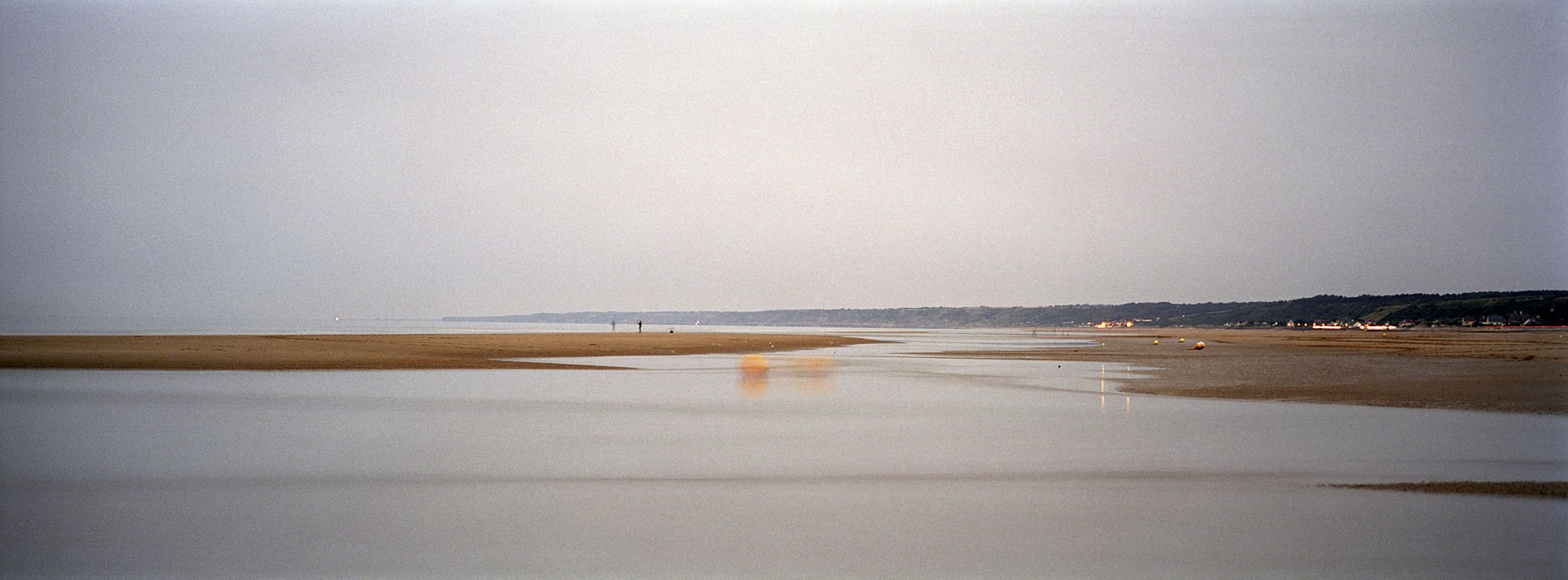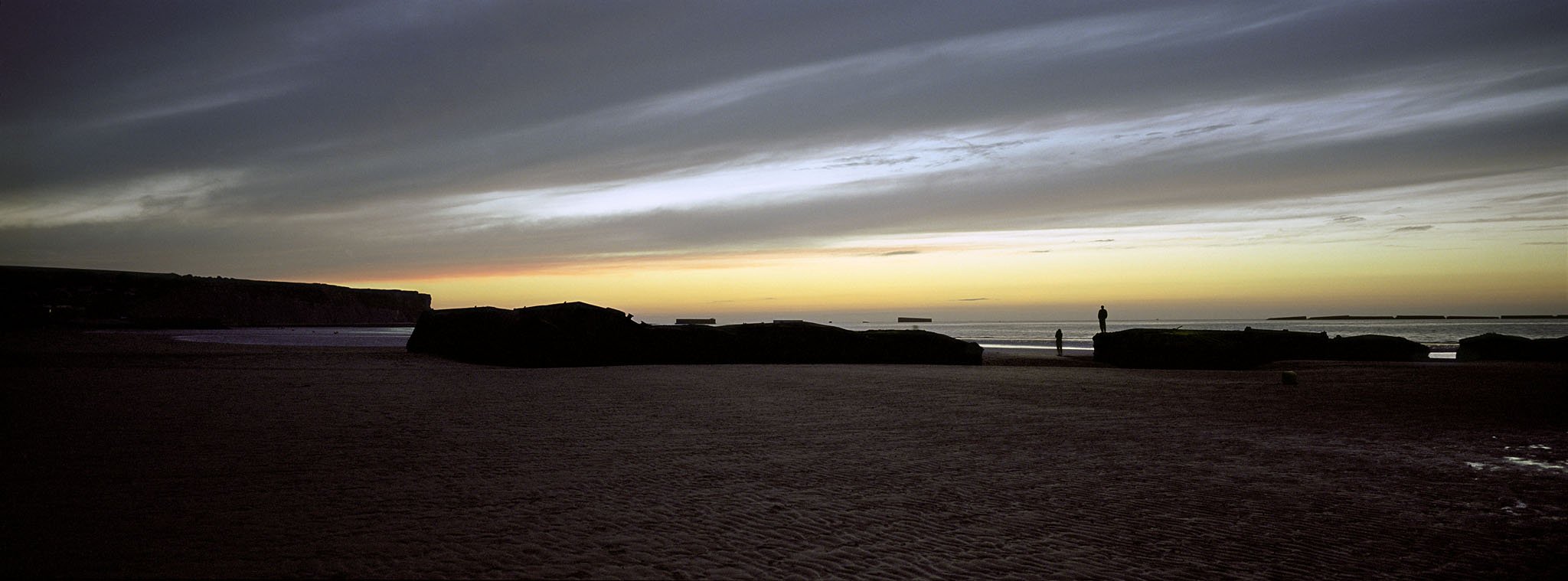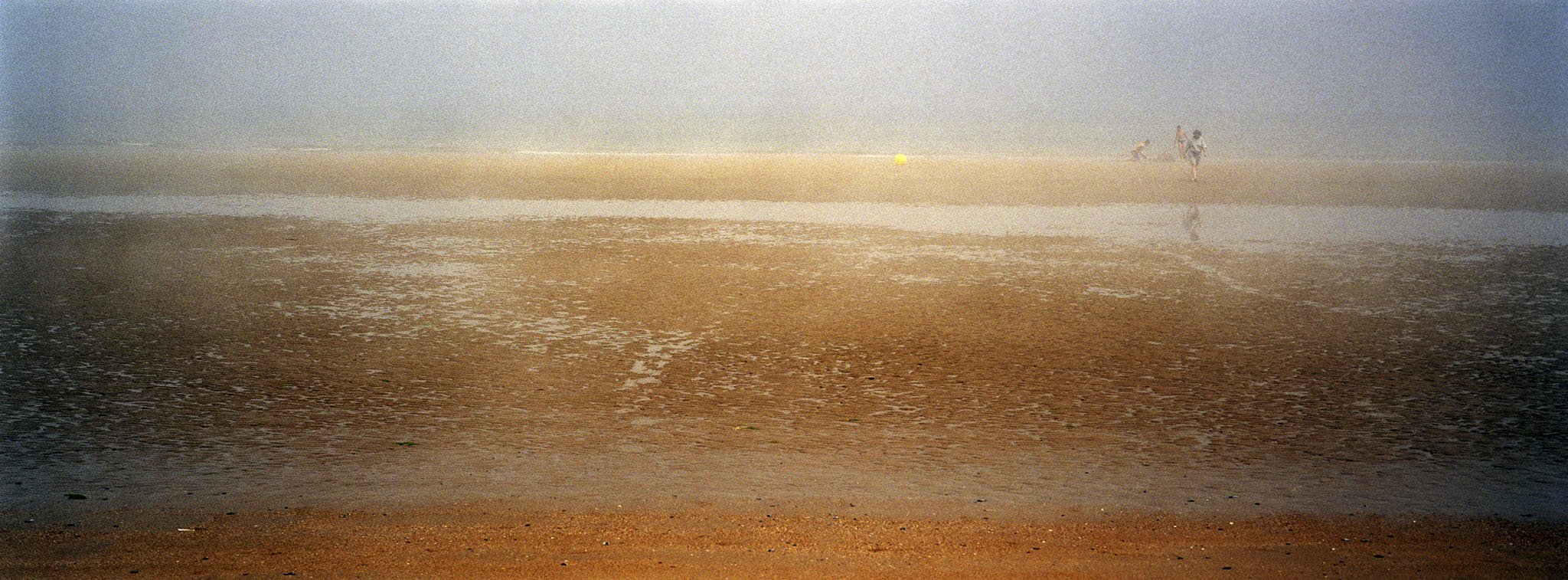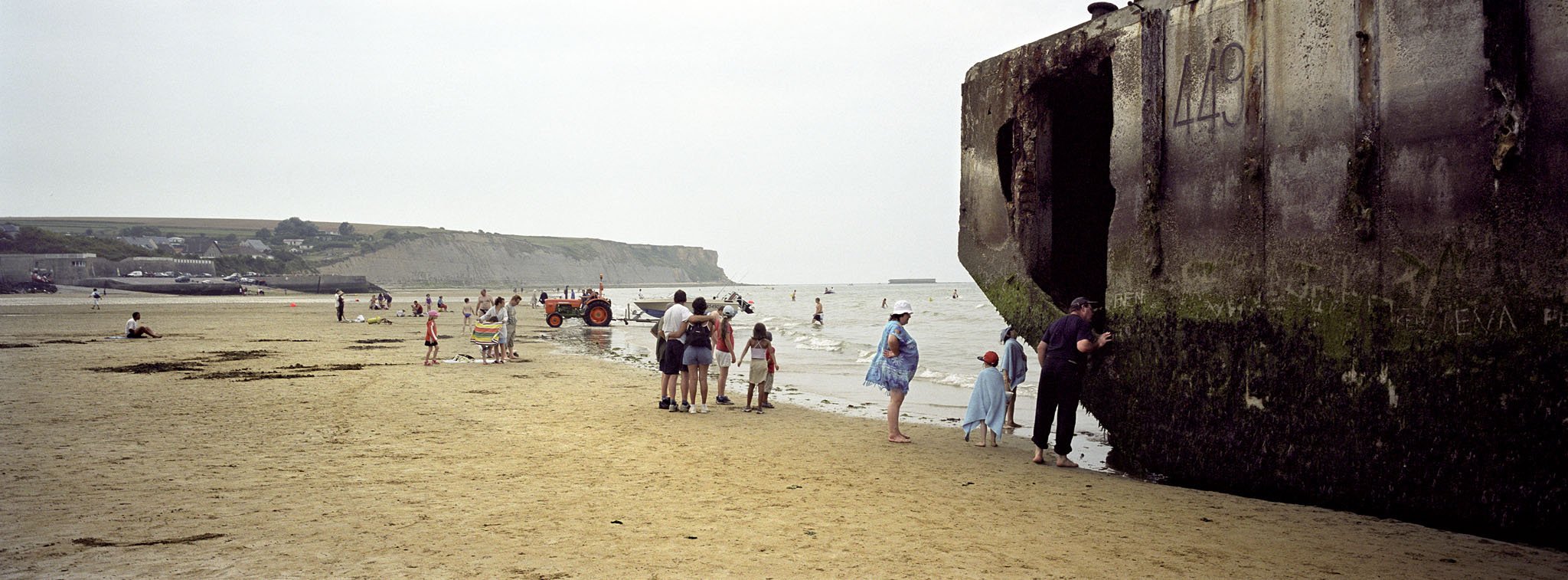
Normandie
On June 6th 1944, thousands of men fought on five beaches once codenamed Utah, Omaha, Gold, Juno and Sword. A year later, the war in Europe would end. The project covers these beaches in a series in which passers-by, bathers and sunsets coexist with the metallic structures that remain, like ancient monuments of our wartime past, which make us understand how certain events articulate new meanings into the landscape.
The Normandy landings marked the beginning of the end of the II World War, an important event engraved in the memory of the 20th century. But what happens when a place becomes part of history, and can the landscape retain its memory?
The space portrayed by the photographer contains a crack linked to our past. Latent like the vestiges of a wound, it attracts the attention of both the photographer and the spectator, because discerning the ruins of a battle from the present, urges us to face its ghosts.
All this is a reflection on the weight and the trace of the history that remains trapped in the light of those beaches, where thousands of men stumbled upon an inferno of mines and gunfire that threw thousands of dead men into confusion, remaining attached to the constant crashing of the waves. When you look closely at those beaches through a camera, you perceive a tremor that transcends the visual, because photography, using the poetics of contemplating the place, makes us participants in our history.



















